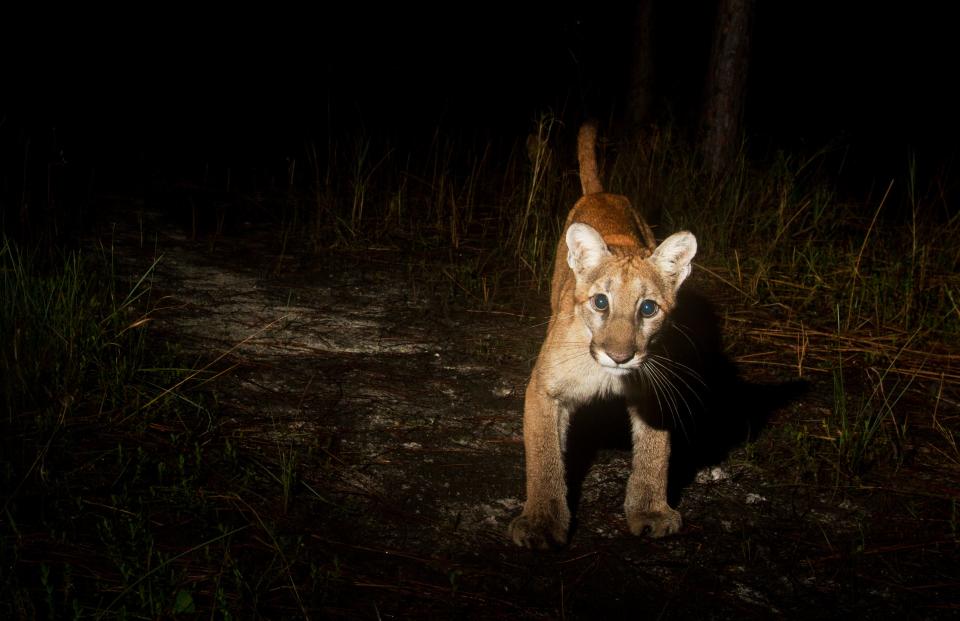Panthers: Group sues over failure to protect cats from pesticides, female collared at CREW
An environmental group last week filed a lawsuit against the U.S. Fish and Wildlife Service accusing it of failure to protect endangered species from dangerous chemicals.
The Center for Biological Diversity says up to 97% of endangered species are threatened by pesticides, and the group wants the FWS to help ban the use of those pesticides.
"From rusty patched bumblebees to Florida panthers, hundreds of plants and animals are really suffering while they wait for basic protections from toxic pesticides,” said Lori Ann Burd, environmental health director for the Center for Biological Diversity. “The Endangered Species Act is incredibly effective, but it can’t stop extinctions if the agency tasked with protecting wildlife refuses to do its job."

The suit was filed in Federal District Court in Tucson, Arizona.
"The Florida panther is really affected," said Center for Biological Diversity spokesman Jonathan Evans. "The reason the Florida panther is mentioned is the overlap with where it lives. They live close to agricultural areas, and it overlaps. And that's where you see that affecting the population."
FWS spokeswoman Vanessa Kauffman said the agency does not comment on pending cases.
The Center for Biological Diversity is asking the FWS to ban the use of six pesticides that are now in use in many states.
"(The) amended complaint expands the case to include four additional pesticides the Environmental Protection Agency has found to be widely harming the wildlife: carbaryl (91%), methomyl (61%), atrazine (56%), and simazine (55%)," a press release from the Center reads. "Over six years ago, the EPA determined that 97% of the more than 1,800 animals and plants protected by the Endangered Species Act are likely to be harmed by chlorpyrifos and 78% are likely to be hurt by diazinon."
Something in the environment has caused Florida panthers and bobcats to develop a neurological disorder that was first documented in 2016, biologists say.
Is novel disease related to agriculture pesticides?
Feline leukomyelopathy, or FLM, is a neurological disorder that causes the cats to lose control of their hind legs and pelvis.
It has led to the deaths of several panthers and bobcats, and scientist don't know exactly what is causing the disease, other than it's something in the environment.
The News-Press sent a list of the pesticides to the Florida Fish and Wildlife Conservation Commission, or FWC, to see if past panther necropsies have tested for those chemicals.
FWC has not returned messages at this point.
"Under the Endangered Species Act, the Fish and Wildlife Service is required to expeditiously review the EPA’s findings of pesticides’ harms and put measures in place to prevent species from going extinct or being unnecessarily killed by the chemicals," the release reads. "But the Service has routinely failed to comply."
Another female panther collared near CREW
Tom Mortenson is a retired photographer and spends much of his time analyzing hundreds of photos he's captured of Florida panthers in the Corkscrew Regional Ecosystem Watershed, or CREW.
He said FWC recently captured and collared a small female panther near the CREW trailhead along Corkscrew Road.
She weighed in at 68 pounds, Mortenson said.
"The collaring will make her easy to identify as long as she passes by my cameras in CREW and Caracara on the west side of Corkscrew Marsh," Mortenson said. "My cameras might have seen her in daylight only once, and on video, at Gate 3, on January 22, prior to her capture and collar:"
Connect with this reporter: Chad Gillis on Facebook.
This article originally appeared on Fort Myers News-Press: Suit filed over failure to protect panthers, other species from pesticides

